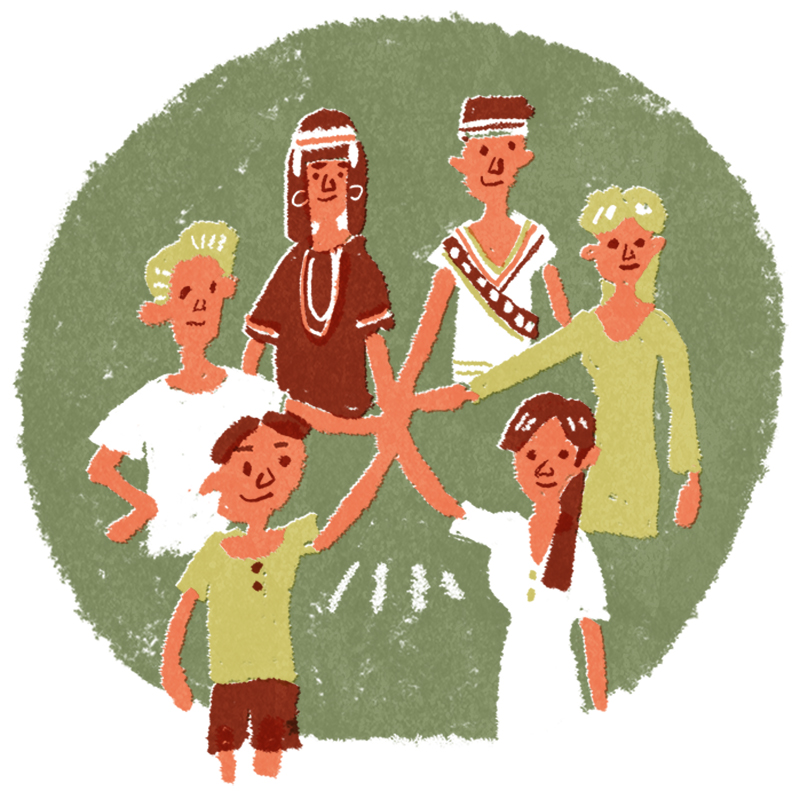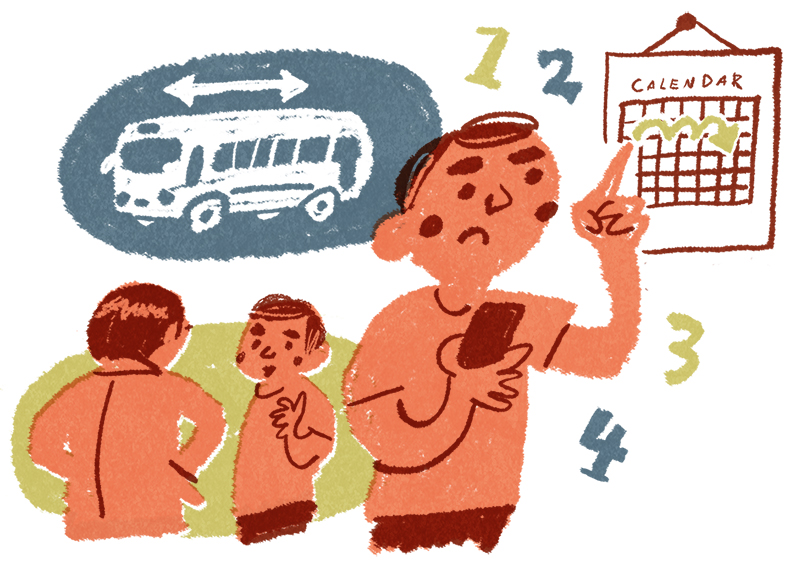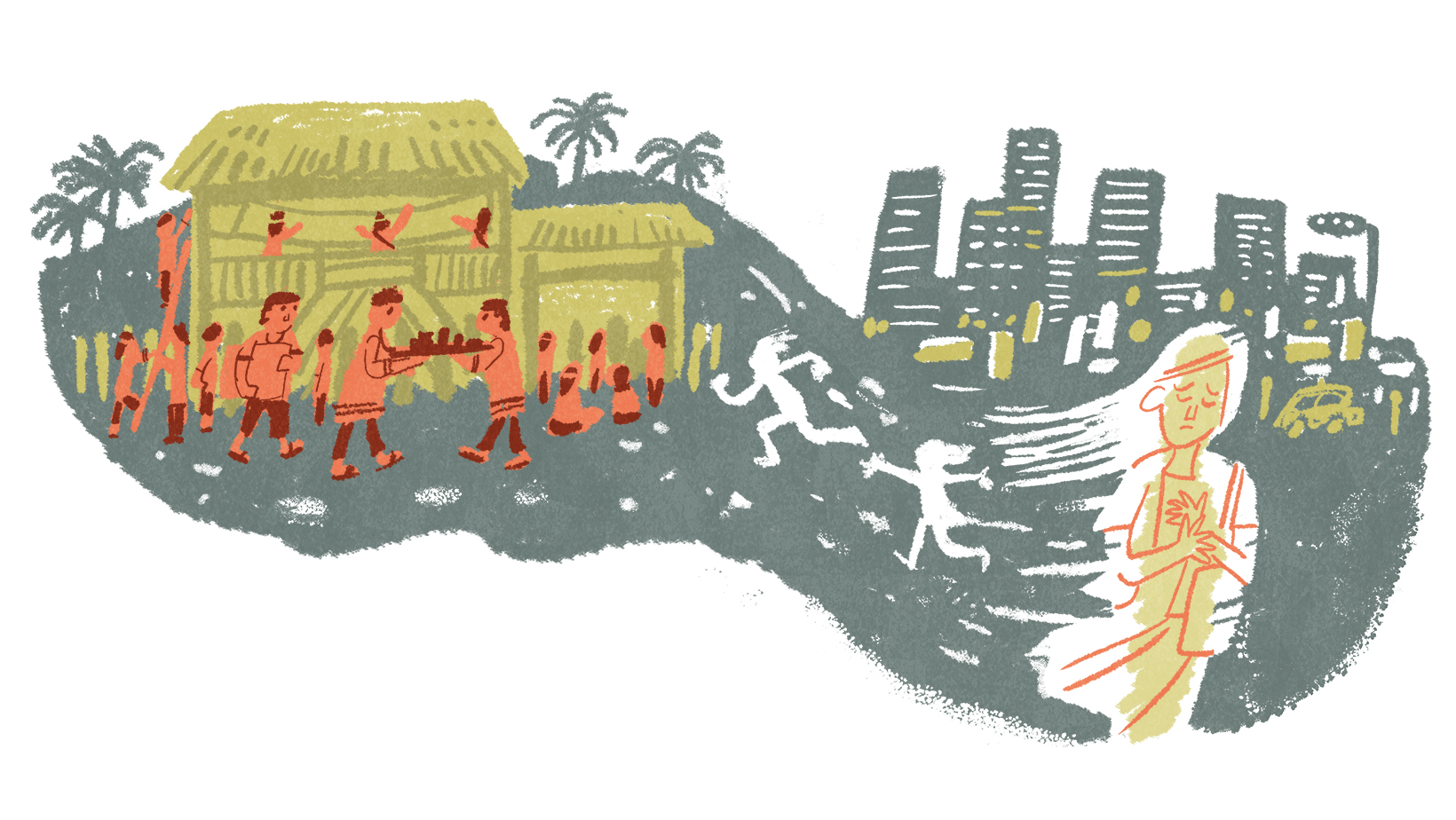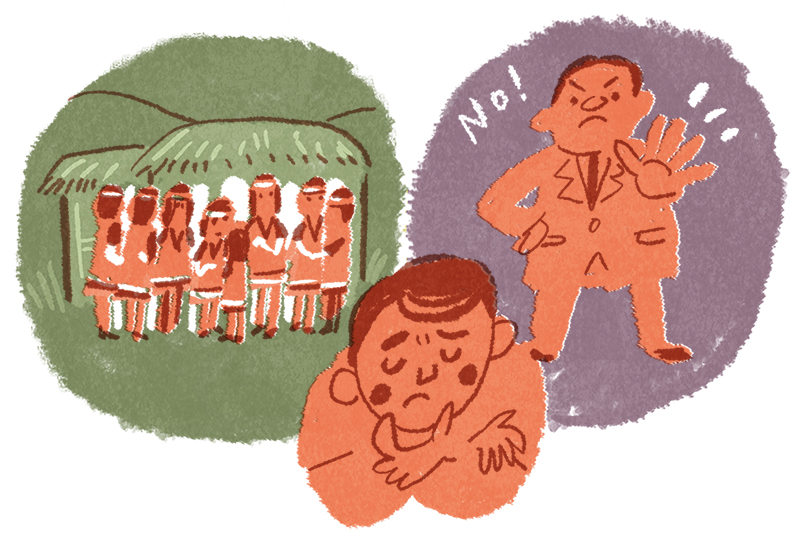Traditional rituals are the core of indigenous Taiwan’s culture. In 2006, the government officially designated such events as national holidays. Those who are recognized as indigenous by law are eligible to take a day off during their major events. But is this one-day holiday enough to meet their needs?

The Origin
of Ritual Holidays
The concept of modern holiday originates from European religions, which gives rise to such examples as Christmas and Easter. After modern nation-states take shape, states around the world begin to designate public holidays to commemorate their folk or political events. The purpose is twofold: to create collective memories of the public and to foster national ideology. As a type of folk holiday, ritual holidays represent the accumulation of life experiences of a certain indigenous group, which is embodied in the form of rituals and ceremonies teeming with cultural significance. The designation of such holidays helps to shape the identity of indigenous peoples.
In Taiwan, to highlight the diverse ethnicity of our society and embody the ideal of equality, amendments were made to the Article 4 of Implementation Measures for Memorial Days and Holidays, including indigenous rituals and ceremonies to the list of folk holidays. Since 2006, those who are recognized as one of the 16 indigenous peoples by law are eligible to take a day off during their traditional rituals.

How to Apply
for a Ritual Holiday?
As is stipulated, indigenous citizens are eligible to ask their employers for a day off based on the Calendar of Indigenous Ritual Holidays released annually by the Council of Indigenous peoples. For application, the household registration certificate or any documents that can represent the applicant’s identity are required.
 A ritual holiday is paid leave. If the leave request is denied, overtime pay on the part of employers is mandatory in lieu of the holiday.
A ritual holiday is paid leave. If the leave request is denied, overtime pay on the part of employers is mandatory in lieu of the holiday.
 The leave request approved. Community members book their tickets to return home.
The leave request approved. Community members book their tickets to return home.
A One-day Holiday
far from Enough
According to Article 4 of Implementation Measures for Memorial Days and Holidays, the statutory folk holidays in Taiwan include Chinese New Year's Eve, Chinese New Year, Tomb-sweeping Day, Dragon Boat Festival, Mid-Autumn Festival, and holidays for various indigenous rituals and ceremonies. Most of these holidays last only one day, except for the Chinese New Year, which is celebrated over a time span of three days. Compared in terms of the total number of days, the indigenous ritual holiday, which is designated individually form different ethnic groups, is disproportionately outnumbered by other Non-indigenous-Chinese oriented folk holidays by 1 to a minimum of 7 days each year.
Nowadays, cities have seen a large number of indigenous people living and working away from their homeland. To attend traditional rituals, they often have to travel a long way back home. Travelling back and forth might take them at least two days. What is more, there is plenty of preparation to be done, although it might differ from ethnic group to ethnic group. With only one day off, it is extremely difficult for returning community members to get involved in preparatory work.
Also, the official Calendar of Indigenous Ritual Holidays can only serve as a reference for community members to request a day off from their employers. But it fails to cover the date of events for all the indigenous communities since the exact date might differ from village to village. Hence, many people have to present posters, invitations, and other relevant documents as proof when filing a leave request, while their employers might make things difficult by denying it purposely.
The failure to achieve the original intent and expected result of designating ritual holidays is due to the authority’s neglect of varied cultural characteristics across Taiwan’s indigenous peoples. There are multiple rituals and ceremonies to be held annually by various ethnic groups. According to the official calendar, however, each of Taiwan’s 16 indigenous peoples has only one important ritual included. Take the Paiwan’s Maljeveq for instance. Although no less significant than Masalut (harvest ritual), it is not designated as an official ritual holiday.

The Passing on of Culture Threatened
by Simplification of Rituals
Recent years have seen a growing trend of leisure culture, and holidays originally meant for commemorative purposes have come to be viewed as a time “for an outing.” However, for indigenous peoples, who have been subjected to severe modern cultural impact, traditional rituals and ceremonies are far from an ordinary holiday just for rest and outings. Nor are they a festive occasion to be celebrated simply by singing and dancing in full costume. Rather, they serve to embody the values of their lifestyles, knowledge, beliefs, and ethical norms through the passing on of traditional practices from generation to generation.
Take the Pangcah’s Kiwit Community as an example. In the month ahead of the traditional Komolis (fishing ritual), by tradition, such tasks as woodchopping and harvesting the plant called thickfruit millettia are to be taken by the young members from the village’s age hierarchy system. But nowadays with most young people moving out to work elsewhere, these tasks are left unattended due to the severe manpower shortage. This not only imposes a threat to the community’s age hierarchy tradition but also gives rise to the remaining members’ call for canceling the event.
To facilitate community members returning from elsewhere with limited time available, many villages choose to simplify their rituals by reducing them to one day or a half-day. In other cases, the younger generation of some urban indigenous people, growing up with weak ties with their ancestral homes, might participate the event less frequently due to the difficulties in obtaining a day off under the existing mechanism. This has imperceptibly threatened the continuation of indigenous culture.

Traditional Ritual Holidays
in Malaysia
In the case of Malaysia, which like Taiwan is a multi-ethnic country, holidays are divided into two types: national public holidays and non-national public holidays designated respectively by state and federal territory governments. The former includes folk holidays of Malaysia’s three major ethnic groups, such as Chinese New Year, the Indian Deepavali (Sarawak excluded), and the Islamic Awal Muharam (Maal Hijrah). The latter includes the Pesta Kaamatan (harvest festival) of the Kadazan Dusun people in Sabah, and the Gawai Dayak (harvest festival) celebrated by the Iban, Bidayuh, and Orang Ulu peoples.
How to designate and celebrate national holidays is an inevitable issue for multi-ethnic countries. To strike a balance between economic and social development, ethnic equality, and passing on of cultural heritage, while at the same time to create a more friendly environment for indigenous peoples, the authorities must make a careful consideration in dealing with it.
References:
陳賢義(2017年6月21日)| 原住民可在祭典期擇1日休 原民議員:太短了。自由時報,https://news.ltn.com.tw/news/life/ breakingnews/2107055。
邱韻芳 | 從木船拉縴、竹筏到文化泛舟。芭樂人類學,https://guavanthropology.tw/article/5111。
Chiang Kuo-Hsiung shares the age class structure in Kiwit Village.(2020, April 26) ∣ Interviewed by: Liang Wen-Jing.
薛佩玉(2004)| 台灣1950~2004年國定假日的社會學分析。國立中山大學中山學術研究所論文,未出版,高雄。
彭成毅 | 吉隆坡,一座見證五種宗教共存的多元城市。故事,https://storystudio.tw/article/gushi/5-religion-in-malaysia/。




